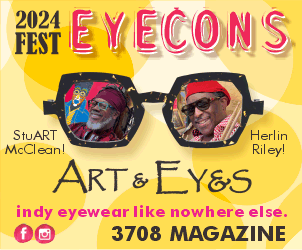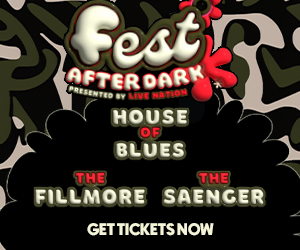California-based producer Jennifer Lee–better known by her stage name, TOKiMONSTA–will bring her dance-inducing beats to New Orleans on Friday, March 11 when she performs at the Buku Music + Arts Project. The set will mark Lee’s first appearance at Buku, though she’s played shows in New Orleans on numerous occasions.
Lee made her mark in the EDM world when she became the first female to sign with Flying Lotus’ Brainfeeder label. She has since grown in popularity with a sound that ranges from powerful and heavy, to more relaxed and down-tempo. It’s a musical variety that is reflected in her stage name, which stands for “rabbit monster” (toki is Korean for rabbit).
In recent years, Lee has continued to break new ground. Her latest album Fovere was released just last week via Young Art Records, a new label that she founded in 2014.
I caught up with Jennifer to discuss the record and her creative process. She also shared some insights into how her recorded music is translated into the energetic live production that will take over the Back Alley stage at Buku this weekend.
You were on tour this past summer, and you’re continuing to tour now in 2016. What’s it like staying on the road after such a busy summer?
I have this love/hate relationship with touring. I really like touring until I’m sort of, I don’t want to say bored of it, but there’s a moment where I feel like I miss home. Then when I’m at home I miss touring, then I go back on tour. I’ve had a little break since last year’s run, which ended mid-December, so I’ve had last month and this month to really just reflect and work on music. So I’m really excited to actually go back out and show everyone all the changes I’ve made to my set and the new production I have lined up and all of that.
Have you performed in New Orleans before? Do you have any interesting stories or experiences from your time here?
I have. I’ve played in New Orleans quite a few times but it’s been a while. I don’t think I’ve been there for at least the past three years. The one story I have, it’s the same thing that happens to me every time I’m there. Basically, I’m not sure where it is, but it’s somewhere along some stream or river. Whenever I walk down this area with friends I have that are from there, these guys always come up to me, and they try to bet with me saying, “I bet you five dollars I know where you got your shoes.” And then the trick is, you go, “Oh, yeah, you probably don’t know.” And then they go, “Oh yeah, you got them on your feet.” And it’s like “Oh, ha, ha, ha.” And then they’ll ask for the five dollars. But the thing is that happens to me every time I go there. Because I look like a tourist; I mean I don’t necessarily look like I’m from there. So at this point I just cut it short. I’m like, “Yeah I know, I got them on my feet. Uh-huh, very funny.” It is actually pretty funny; now they’re like, “Uh.” They lost the joke, they lost their little bet, so, it’s kind of funny. But other than that I only have really great times there; the food is great, the people are great. I like the culture; I think it’s one of America’s treasure cities, in my opinion.
Your new album Fovere comes out soon. Can you tell me about the recording process?
I guess with all my albums the process is about the same. They’re all a collection of work within a certain stage or a certain time. All the songs on this album are from last year and during that time, I was into doing certain techniques, I was in a certain mood or I had a certain thought process that was very consistent. And when the way I think is consistent, the music will draw consistent. So, I mean there’s not a specific process, more so than just choosing a collection of work from a specific time, because they’ll all sound related to each other. But that is just a reflection of how I am, and if I’m sad, or if I’m going through things, or if I’m discovering a new facet of my production.
Your past albums have dealt with certain themes. For instance, Desiderium means a longing for something lost. Are there any overarching themes for Fovere?
“Fovere,” is Latin for “to cherish,” and I think the last album was more about remembrance and a longing or a desire. “Fovere” is more about cherishing what you have. And this album is definitely a reflection of my entire body of work and not just me trying to do something new. I think it’s me realizing that a lot of people that like to listen to my music have an appreciation for a lot of the older things I’ve done. And for me to sit and think about how fundamental that time period was; the early work that I did and to look back on that and not do the same thing. Because I’m beyond that era, at this point, but to look back at it and rediscover the things that I’ve forgotten about myself, music, or the way that I approach music.
This album was released on your own label, Young Art Records. How does being in charge of the label change the recording process for you?
In only good ways, because now I only answer to myself, which is really nice. I’ve never been on a label where they never gave me artistic freedom, but it’s always the timeline that bothers me. And a lot of times with major labels, or just other labels in general, is that they need a lot of time to sort of build up towards the album. And sometimes they decide, “Okay your album is done now, but let’s release it in a year.” That stuff kind of bothers me, because within that span of time, I would’ve probably already written another album. I probably would have stylistically moved on and forward and by the the time the album comes out I’ll just be a little disappointed because I’m like, “Oh, you know, I’m already past this at this point.” With my wn label, we still need some lead in time, but it doesn’t have to be as long. I’m more involved in the entire process, which is just good in terms of knowledge and the ability for me to provide other artists with the same experience I’ve given myself, which means having things done fairly, and within a time line that you’re comfortable with as an artist. So that’s been good. And all the logistical and administrative stuff, I don’t do that. I don’t think anyone would trust me to do any of that stuff, so that’s probably better anyway.
You recently released a video for “Put It Down” that contains a lot of weird imagery. What was the inspiration behind that?
I’m not entirely sure. With most of my videos, I’m pretty involved. This is the first video where I definitely overlooked the process. I usually micromanage on the artistic level, but I really let Mike, who was the director, follow his vision. I gave him some notes as well, but what he said sounded really cool. He’s a director that Anderson’s worked with in the past, and I’ve really liked his work. But, I think most of the emotion and relation to the song lyrics come from Anderson’s performance. A lot of the imagery where it’s all red, and it’s with the three other actors, I think a lot of that has to do with imagery and feeling. So with Mike, the way that he’s looking at it is that he’s associating the visuals with the tone of the song. Then you gain more of the direct relation to the lyrics through Anderson. So that’s my interpretation, but I kind of like the idea of letting someone do something and not having to really put so much of my spin on it. This is the first time, and I thought it came out pretty cool. I mean it’s a really cool looking video. But yeah, the imagery, it does have a weirdness to it. I think that’s what makes it interesting as well. Only Mike will know why he did what he did. So I kind of admire that too.
Does the music that you produce generally reflect what’s happening in your life, or how you’re feeling at the time that you create it?
Yes, but not always in very obvious ways. Sometimes people are sad and they make a sad song. Sometimes if I’m sad, for example, I may make a sad song. Or I might make an uplifting or happy song. I create music as a reflection of, or a reaction to, how I’m feeling. Like I’m kind of sad right now, but then the songs I’m making are not sad songs. Just to keep my mind focused on the positive, I’m making more positive songs. And it’s not like I’m intending to do that, that’s just the music. The music that’s coming out is just coming out that way. I try not to have straight up intentions when it comes to the music. I just want it to happen. How I feel in life definitely encourages me to make music but doesn’t guarantee the kind of music that will come out.
How does your music translate in the live setting?
Well the live performance is a little different. I think that when you go watch a show, there’s a part of you that wants to hear songs the way that you know them, and then there’s a part of you that wants to be entertained by the live experience. And it doesn’t have to be entertaining, like you’re jumping up and down. If you’re watching, let’s say Adele or something, there’s a powerful aspect of her performance that probably affects you. For me, I guess I want to create an experience where the audience is familiar with the songs I’m playing, but I want to give them something different. So I won’t play anything exactly like how it is on the album. Enough where people aren’t disappointed, but enough where people are excited by the new experience. Like, you can only hear this song this way at my show. I think if they have fun and I have fun that’s always amazing too. It’s amazing if we have a shared experience where we both really value the moment together. I’ll always remember that time in Minneapolis, and I’ll always remember that time in Colorado or New York or New Orleans, hopefully, too.




